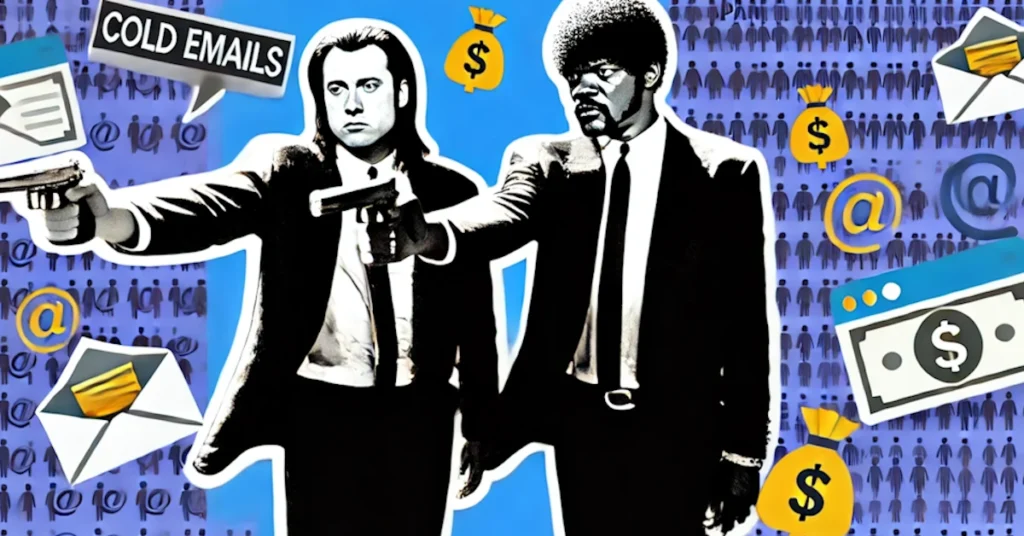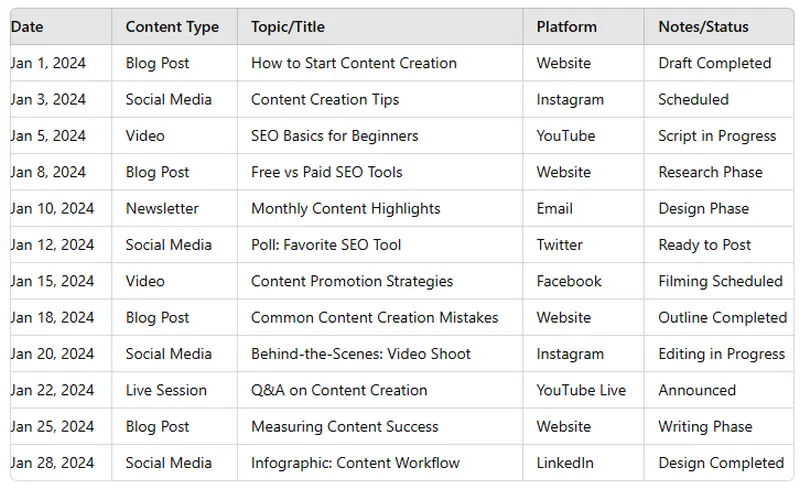Alright, buckle up! You’re about to embark on an exhilarating adventure in content creation. Whether you’re just dabbling or aiming to become the next big thing, this guide is here to transform you from newbie to know-it-all. And don’t worry, we’ll have a laugh or two along the way. Let’s dive in, shall we?
Why Content Creation Matters
First things first, why should you even care about content creation? Simple: it’s everywhere. From the articles you read online to the videos you binge-watch, content is the lifeblood of the internet because it drives engagement and keeps people coming back for more. If you want to make waves and be a digital superstar, creating great content is your golden ticket because it helps you stand out and attract a dedicated audience. Just look at YouTube creators like PewDiePie or businesses like Moz that have thrived on content marketing. It can boost your business by attracting more customers, build your brand by establishing your authority in your niche, and even make you internet famous by growing your online presence.
Content creation isn’t just about filling up space on the internet; it’s about making a real difference and connecting with people. Whether you’re informing, entertaining, or inspiring your audience, your content needs to offer something meaningful. Good content can build trust, foster loyalty, and convert casual visitors into devoted followers, which is crucial for long-term growth and success. For instance, brands like HubSpot and Neil Patel have built massive followings by consistently providing valuable content.
Finding Your Niche
Before you start pounding away at your keyboard, you need to figure out what you’re going to talk about. This is your niche. Think of it as your corner of the internet where you get to be the expert. Maybe it’s cooking, maybe it’s tech reviews, maybe it’s cat yoga (yes, that’s a thing). The key is to pick something you’re passionate about and that you won’t get bored of in two weeks.
Ask Yourself:
- What topics do I love to talk about?
- What am I knowledgeable about?
- What gaps exist in current content that I can fill?
Identifying your niche is crucial because it shapes your content strategy. If you’re passionate about your topic, your enthusiasm will shine through, making your content more engaging and authentic. Plus, a well-defined niche helps you target your audience more effectively, ensuring you attract the right readers, viewers, or listeners who are genuinely interested in what you have to say.
Master the Essential Skills
Content writing isn’t just typing words on a screen; it’s a craft that allows you to share stories, and knowledge, and persuade people—all from your laptop.
The Power of a Great Headline
People have the attention span of a goldfish these days, which means you need to grab their attention quickly and keep them engaged with compelling content. That means your headline needs to catch their attention and hold it. A great headline is like the cover of a book – it can make people stop and pay attention or keep scrolling.
Tips for Crafting Killer Headlines:
- Be clear and concise. No one likes clickbait.
- Use numbers. People love lists.
- Ask a question. Engage curiosity.
- Promise something valuable. Give them a reason to click.
Headlines are often the first (and sometimes the only) thing people read. A compelling headline should spark curiosity, promise a benefit, or address a need or pain point. Spend time perfecting your headlines, as they can significantly impact the performance of your content.
The Meat and Potatoes of Content Creation: Writing the Body
Now that you’ve hooked them with your headline, it’s time to reel them in with your content. Here’s where you get to shine. But remember, this isn’t your high school essay. Keep it lively, keep it engaging, and for Pete’s sake, keep it simple.
Structure Your Content:
- Introduction: Set the stage. Tell them what you’re going to talk about and why it matters.
- Main Points: Break your content into bite-sized chunks. Use subheadings, bullet points, and lists to make it easy to scan.
- Conclusion: Wrap it up with a neat little bow. Summarize the key points and give a call to action.
Pro Tips:
- Be conversational. Write like you’re talking to a friend.
- Use short sentences. They’re easier to read.
- Throw in some humor. Everyone loves a good laugh.
- Stay on topic. Tangents are for conversations, not articles.
Your content writing should be clear, concise, and engaging. Avoid jargon and complex sentences that can confuse readers. Instead, focus on delivering your message in a straightforward and relatable manner. Don’t be afraid to show your personality – it helps create a connection with your audience.
The Visual Appeal
Words are great, but a picture is worth a thousand of them. Or so they say. Adding visuals to your content can make it more engaging and easier to digest.
Types of Visuals to Use:
- Images: Relevant pictures can break up text and keep readers interested.
- Infographics: Great for presenting data in an easy-to-understand format.
- Videos: Perfect for tutorials or deep dives into complex topics.
- GIFs: Because who doesn’t love a good meme?
Visual content is a powerful tool to enhance your message and keep your audience engaged. High-quality images, infographics, and videos can illustrate your points more effectively than words alone. Moreover, they can make your content more shareable on social media, helping you reach a wider audience.







SEO: Your Best Friend
Search Engine Optimization (SEO) might sound scary, but it’s your ticket to being found on the internet. Think of it as sprinkling magic fairy dust on your content to make it visible to search engines like Google.
Basic SEO Tips:
- Use keywords: These are the terms people search for. Sprinkle them naturally throughout your content.
- Write meta descriptions: These short summaries appear under your link in search results.
- Include internal and external links: Link to other relevant content on your site and credible sources elsewhere.
- Use alt text for images: This helps with accessibility and gives search engines more info about your content.
SEO is crucial for driving organic traffic to your content. Studies have shown that websites on the first page of Google search results receive 91.5% of the traffic, highlighting the importance of SEO. By optimizing your content for search engines, you increase the chances of your work being discovered by people searching for information related to your niche. Remember, SEO is not about gaming the system but about providing valuable, relevant content that answers the queries of your audience.
Essential Free SEO Tools
- Google Analytics
- Google Search Console
- Ubersuggest
- Keyword Planner
- MozBar
Essential Paid SEO Tools
- Ahrefs
- SEMrush
- Moz Pro
- Majestic SEO
- Screaming Frog SEO Spider (full version)
Editing: The Not-So-Secret Sauce of Content Creation
Nobody gets it right on the first try. Editing is where the magic happens. It’s where you take your rough draft and polish it until it shines.
Steps to Effective Editing:
- Take a break: Step away from your work for a bit. Fresh eyes catch mistakes better.
- Read aloud: You’ll catch awkward phrasing and errors more easily.
- Check for clarity: Make sure your ideas are clear and easy to understand.
- Eliminate fluff: Cut out any unnecessary words or tangents.
- Proofread: Check for grammar, spelling, and punctuation errors.
Editing is not just about fixing typos; it’s about refining your message and improving the readability of your content. Don’t rush through this stage. Take your time to ensure your content is as polished and professional as possible.
Promoting Your Content
You’ve written a masterpiece. Now what? It’s time to promote it. Promotion is just as important as creation because it ensures your content reaches the right audience, increasing visibility and engagement. Without it, your content might as well be a tree falling in the forest with no one around to hear it.
Ways to Promote Your Content:
- Social Media: Share your content on platforms like Facebook, Twitter, LinkedIn, and Instagram.
- Email Newsletters: Send your latest posts to your subscribers.
- Guest Posting: Write for other blogs or websites in your niche.
- Collaborations: Partner with other content creators to reach a wider audience.
- Paid Ads: Invest in social media or search engine ads to boost your reach.
Promotion is about getting your content in front of as many eyes as possible. Utilize different channels and strategies to maximize your reach. Engage with your audience on social media, participate in relevant online communities, and leverage your existing network to spread the word.
Pro Tip:
While paying for followers might seem like a quick way to boost your numbers, it’s generally a horrible idea. Purchased followers are often inactive or fake accounts, which can harm your engagement rates and credibility. Focus on building a genuine audience that truly values your content instead.
Engaging with Your Audience
Content creation isn’t a one-way street. Engaging with your audience is crucial. Respond to comments, ask for feedback, and make your readers feel valued.
Tips for Engagement:
- Reply to comments: Show your readers that you care about what they have to say.
- Ask questions: Encourage interaction by asking for opinions or experiences.
- Run polls or surveys: Get direct feedback on what your audience wants to see.
- Host live sessions: Go live on social media to interact with your audience in real time.
Engagement helps build a loyal community around your content. When your audience feels heard and valued, they are more likely to stick around and support your work. Plus, engaging with your audience can provide valuable insights and ideas for future content.
Keeping the Momentum
Consistency is key in content creation because it helps build trust with your audience, keeps them engaged, and improves your chances of being discovered by new followers. You can’t just post once and disappear. Keep the momentum going by sticking to a regular schedule. Your audience will come to expect and look forward to your content.
Staying Consistent:
- Create a content calendar: Plan your posts ahead of time.
- Batch create content: Work on multiple pieces at once to stay ahead.
- Repurpose content: Turn a blog post into a video, a podcast, or an infographic.
- Stay inspired: Follow other creators, read widely, and always be on the lookout for new ideas.
A content calendar can help you stay organized and ensure you’re regularly delivering fresh content. To create one, list out your content ideas, assign deadlines, and plan your publishing schedule in advance. Consistency helps build your credibility and authority in your niche. It shows your audience that you’re serious about providing value and keeps them coming back for more.

Measuring The Success of Content Creation
How do you know if your content is hitting the mark? You need to measure its performance. Analyzing your content’s success helps you understand what works, what doesn’t, and how you can improve.
Key Metrics to Track:
- Page Views: How many people are visiting your content?
- Engagement: Are people liking, sharing, and commenting on your posts?
- Conversion Rates: Are readers taking the desired action (e.g., subscribing, purchasing)?
- Bounce Rate: Are people sticking around or leaving quickly?
- Time on Page: How long are visitors spending on your content?
Use tools like Google Analytics, social media insights, and other analytics platforms to track these metrics. Regularly reviewing your performance data helps you make informed decisions and refine your content strategy.
Pro Tip:
If you’re finding the Google Analytics interface too complex, try using a simplified dashboard tool like Looker Studio. It allows you to create custom reports and visualizations that highlight the most important metrics, making it easier to understand your data at a glance. You can also explore tools like Analytics Canvas or Supermetrics to streamline data analysis and reporting.
Staying Up-to-Date
The world of content creation is constantly changing. New trends, tools, and technologies emerge all the time. Staying up-to-date is essential to keep your content fresh and relevant.
How to Stay Current:
- Follow Industry Blogs and News: Stay informed about the latest trends and developments.
- Join Online Communities: Engage with other content creators and share insights.
- Attend Webinars and Conferences: Learn from experts and network with peers.
- Experiment with New Formats: Don’t be afraid to try new content types and strategies.
Adaptability is crucial in the ever-changing digital landscape. By staying informed and being open to new ideas, you can keep your content relevant and ahead of the curve.
Your Next Steps
Now that you’re armed with the basics of content creation, it’s time to put it into practice. Start by brainstorming your niche, craft that killer headline, and start writing your first piece of content. Remember, the most important thing is to get started. The more you write, the better you’ll get. And who knows? You might just become the next big thing on the internet.
So, what are you waiting for? Grab your keyboard and start creating! Remember, every expert was once a beginner. And don’t forget to share your journey with us in the comments below. We’re here to support you every step of the way.
